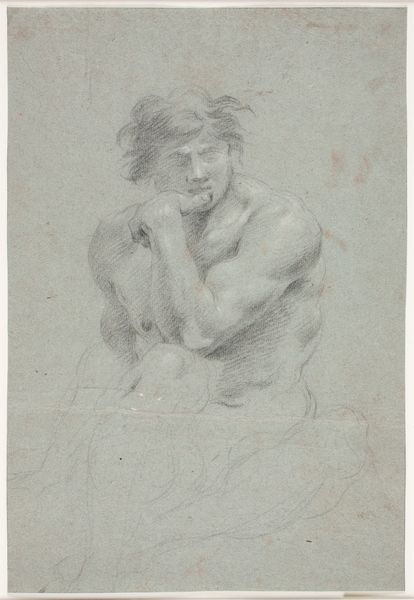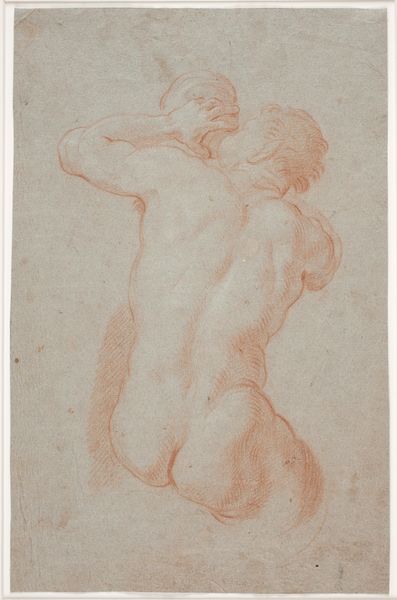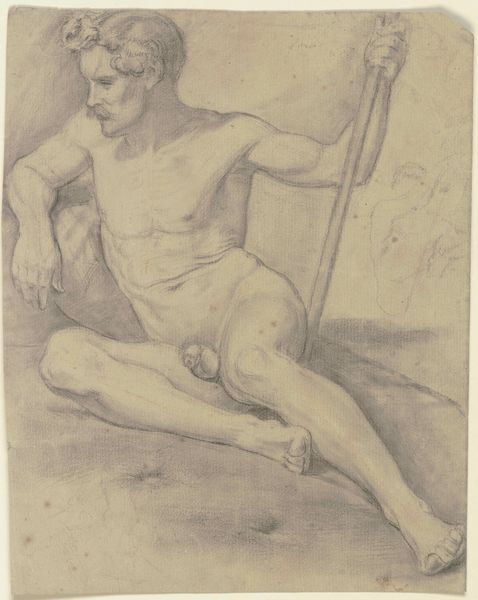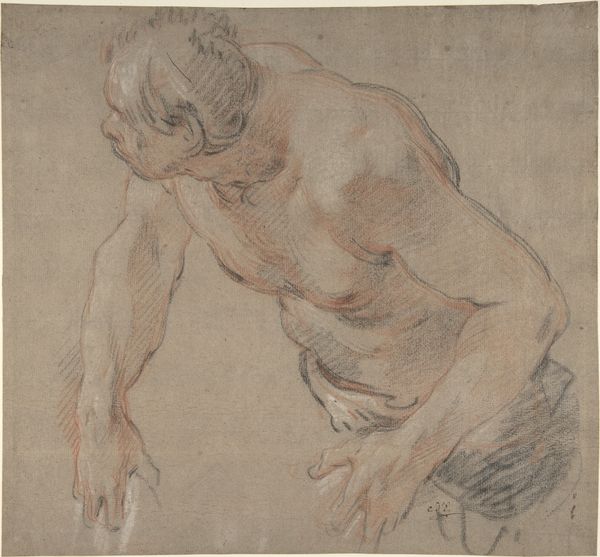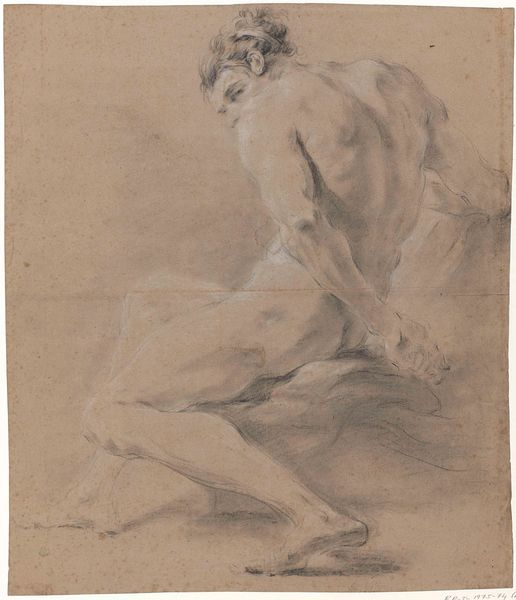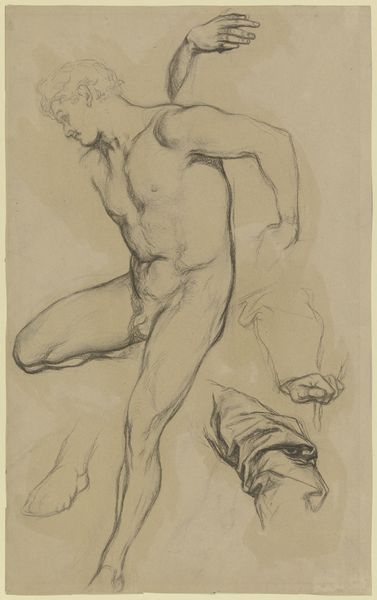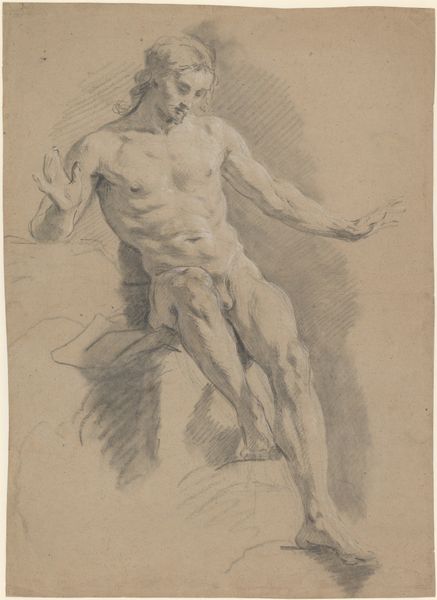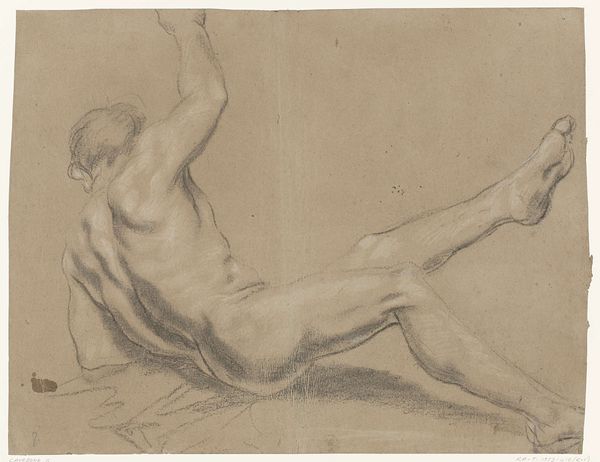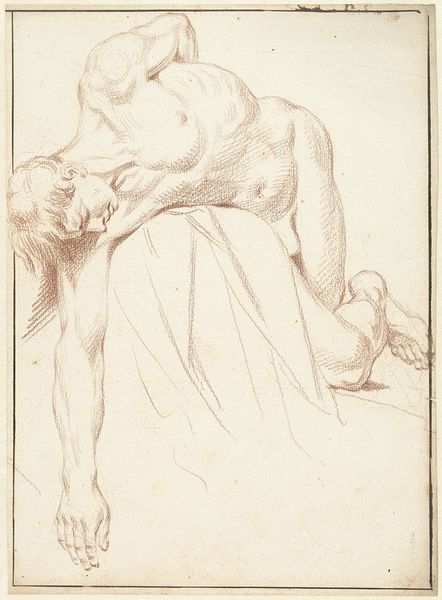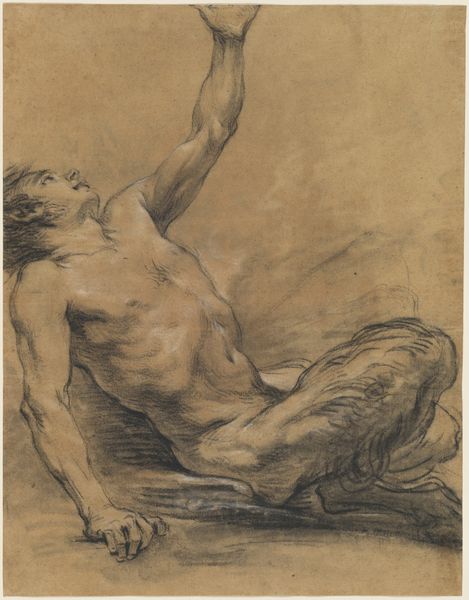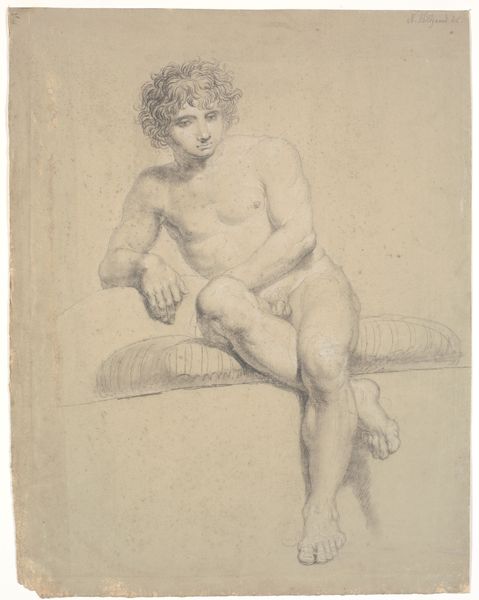
drawing, pencil
#
drawing
#
baroque
#
pencil sketch
#
figuration
#
pencil drawing
#
pencil
#
line
#
nude
Dimensions: height 220 mm, width 165 mm
Copyright: Rijks Museum: Open Domain
Editor: Here we have Simon Vouet's "Faun of sater, zittend naar rechts," a pencil drawing created sometime between 1600 and 1665. It's such a vulnerable pose, the way he's turned away. What’s striking to you about this piece? Curator: Well, this sketch offers us a glimpse into the Baroque era's fascination with classical antiquity, but with a definite social spin. Vouet, while adopting the idealized form, presents this faun in a moment of introspective repose, almost melancholic. Consider the socio-political context: Were these depictions of mythological figures merely artistic exercises, or did they serve as veiled commentary on power, sensuality, or even the fleeting nature of earthly pleasures? What might it say about the audience it was created for? Editor: So, it's not just about idealizing the body, but about communicating something more? Curator: Exactly! These images circulated among the elite. Vouet and his contemporaries had an audience in mind and were deeply influenced by the art market. I wonder, what message might a wealthy patron, accustomed to exerting power, glean from this representation of a mythological being lost in thought? The gaze turned inwards, in a way, almost denying the viewer direct access, or agency. Editor: That’s really insightful. I hadn’t considered the role of the patron in shaping the artwork’s meaning. Curator: The market was changing and the social function of art evolved with it, something Vouet masterfully understood. Editor: This has definitely opened my eyes to thinking about art in a new light, thinking of the viewer and what they would get from it, rather than simply my immediate emotional reaction. Curator: That is the first step. Understanding art’s dialogue with history provides invaluable context for interpreting it.
Comments
No comments
Be the first to comment and join the conversation on the ultimate creative platform.
